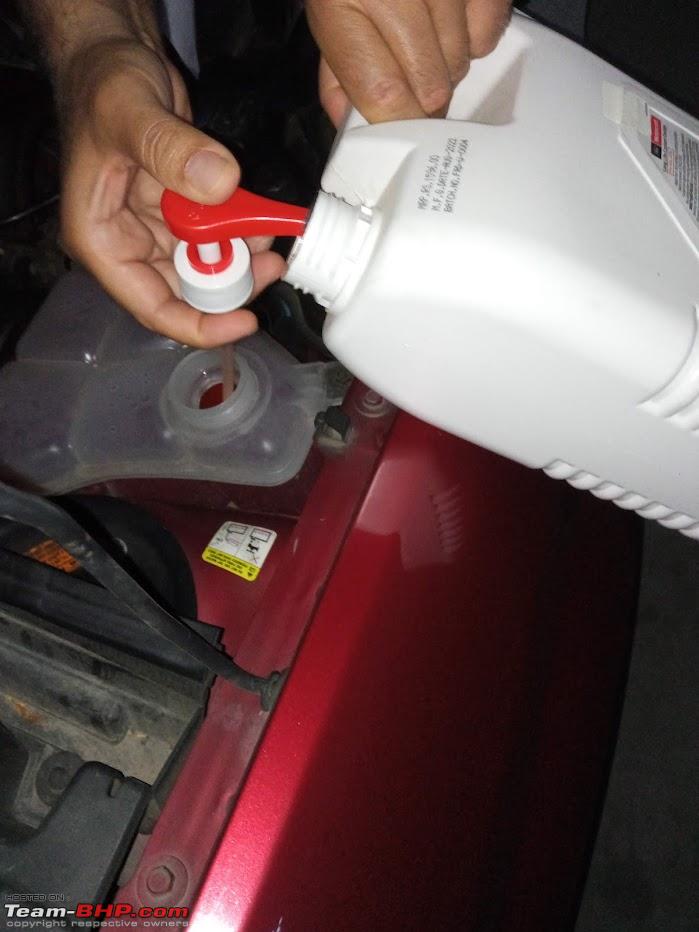I did this on my 2006 Ford Fiesta 1.6 petrol. The time taken can vary a bit depending on the pump used and the quantity of coolant to be removed.
BHPian GForceEnjoyer recently shared this with other enthusiasts.
Our 2006 Ford Fiesta 1.6 petrol recently overheated in traffic due to a stroke of terrible luck: a coolant leak as well as a cooling fan failure. Thankfully, we were able to pull over quickly, avoiding any damage.
Now here’s why this thread exists: once we got the car back from the authorised dealer, I was horrified to see that the coolant level in the reservoir was far above maximum! A serious lapse in workmanship as well as quality control. The service experience this time (and the last few times too) was also underwhelming at best, which is why my dad and I decided to take matters into our own hands, removing the excess coolant at home.
Required items:
- Soap dispenser pump (a long pipe is necessary)
- Sufficiently wide-mouthed container that can be held with one hand
- Gloves/cloth for handling the coolant reservoir cap
- A light source (if in a dark basement)
Time taken
5 minutes, although this can vary a bit depending on the pump used and on the quantity of coolant to be removed.
Here’s the soap dispenser pump we used. It must be absolutely clean, since it will be coming into contact with coolant INSIDE the car’s reservoir.

Here’s the container we used

If you plan to use the coolant later, a coolant container or something similar works best. If not, you just need to make sure you can hold it with one hand while siphoning out the coolant (do make sure to dispose of it properly!). We happened to have a coolant container with us, but any sealable container of good quality will do the job.
Note: Take utmost care to ensure that no coolant comes into contact with your skin.
How to extract the coolant:
It’s best to do this on a cold engine. If that’s not possible for any reason, wait for at least 15 minutes before very slowly unscrewing the cap of the coolant reservoir.
Unscrew the coolant reservoir cap and carefully insert the dispenser pump into the coolant. Then, hold your container in a way that lets the coolant fall from the pump straight into the mouth of the container without any spills. A spill in the engine compartment can cause damage, especially if you’re doing this on an engine that hasn’t fully cooled down, while a spill on the paint can damage the clear coat (and more if it’s left unattended).
Pictures are worth a thousand words, so here’s what I mean:


Continue pumping until the coolant level is as per your owner’s manual’s specifications (between the MAX and MIN markings on a cold engine in our case). And then, you’re done! Put the reservoir cap back on and screw it tightly. Wash your hands thoroughly after you’re done.
It was difficult to get a clear picture of the reservoir in our basement, so I hope this comparison from the side helps.
This was the coolant level before. Note how it’s far above the line of the MAX mark.



And here’s how the coolant level should be.

Like I mentioned earlier, be careful if you choose to dispose of the coolant. It’s best to find a place that takes in hazardous waste, or to give it to a friendly neighbourhood garage that you know will dispose of it properly.
I hope this little thread will be useful for any other victims of aftersales service incompetence or unintentional overfills while changing coolant themselves.
Cheers!
Check out BHPian comments for more insights and information.





